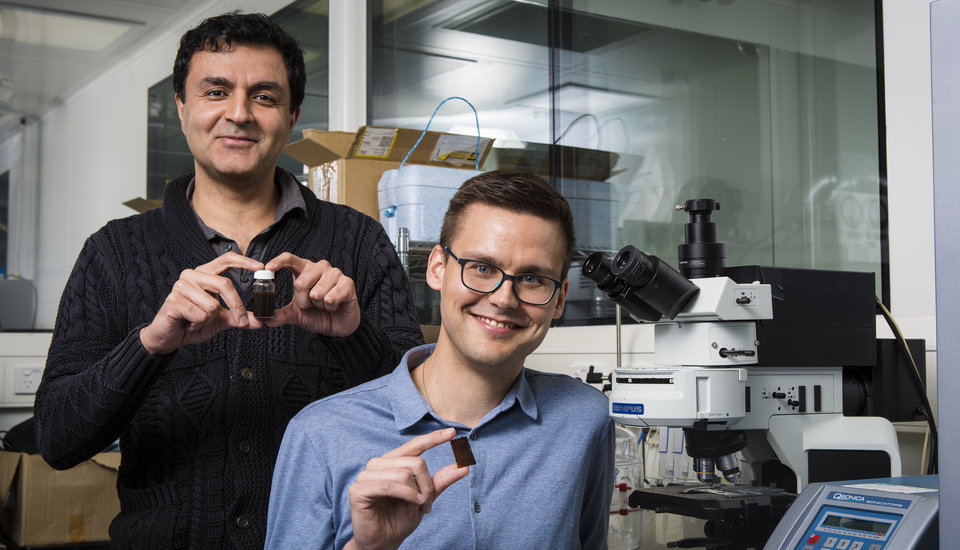By Warren Miller, contributing writer
Sometimes you see a research report on a new technology that seems to turn an old idea on its head. For example, it’s assumed that it would be difficult to switch from gasoline- to hydrogen-powered cars because the delivery system for the hydrogen power source would be so costly to implement. Gas stations are everywhere, so any hydrogen delivery system that needed to compete with gas would be very expensive to build. Maybe gas stations could switch over or offer hydrogen as an alternative, but the idea of adding hydrogen pumps right next to gasoline pumps just seems like an explosion waiting to happen.
Now, Australian researchers at RMIT University in Melbourne have developed a paint that uses solar power to separate hydrogen from water vapor in the air. It can be applied to a roof, a wall, or any other large surface that gets some sunlight. The paint is a mixture of molybdenum sulfide, found in some lubricants, and nanoparticles of titanium dioxide, a compound often used in sunscreen. The research team used a silicon membrane to separate the hydrogen and to channel it into a small containment system.

Researchers Kourosh Kalantar-zadeh and Torben Daeneke hold samples of a hydrogen-producing paint. Image source: RMIT.
These are still early days in the research, and many improvements can be made. Indeed, the researchers have not patented the research because they want as many people as possible to investigate uses for the paint and to look at improvements in efficiency, capture and control, containment, and delivery. The idea of an open-source power-delivery system certainly turns our current model upside down.
If it proves practicable, the development could move us from the current, complex, specialized production and delivery system — with oil fields, pipelines, oil refineries, gasoline delivery trucks, and gas stations — to a point-source and -delivery model. Just paint a part of the roof of your house with the mixture and collect hydrogen in a storage container in your garage. Swap the hydrogen bottle when needed and you’d have power for your car, motorcycle, or lawn mower; you might even be able to power part of your home.
For more information, check out these short summaries. Follow the associated link for the full article.
The research has been published in ACS Nano under the title “Surface Water Dependent Properties of Sulfur Rich Molybdenum Sulfides: Electrolyteless Gas Phase Water Splitting.” ACS Nano is a journal of the American Chemical Society.
http://pubs.acs.org/journal/ancac3
The researchers believe that their development could replace lithium batteries, which have a much bigger carbon footprint that cannot be brought down without significant improvements to Li-ion technology.
http://interestingengineering.com/solar-paint-into-hydrogen-energy-generator/
Titanium oxide is already found in wall paint because it supplies the white pigment. Just adding a new material can help make a brick wall an energy-harvesting system.
https://www.rmit.edu.au/news/all-news/2017/jun/solar-paint-offers-endless-energy-from-water-vapour
Storing the hydrogen extracted from the water vapor is a different story. Hydrogen storage is a field of study in its own right. Currently, researchers are focused on compact car storage systems.
Advertisement
Learn more about Electronic Products Magazine





